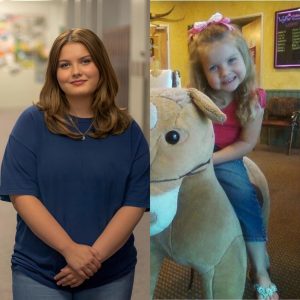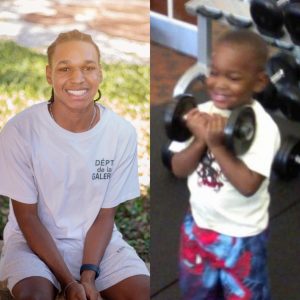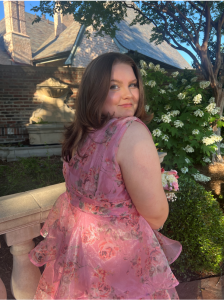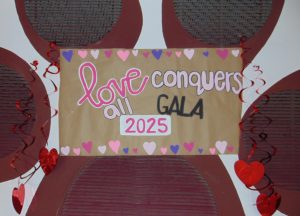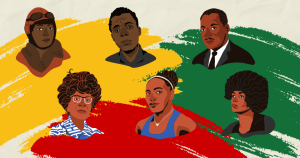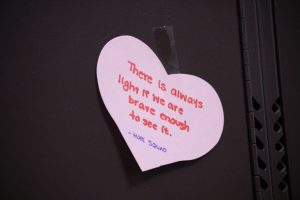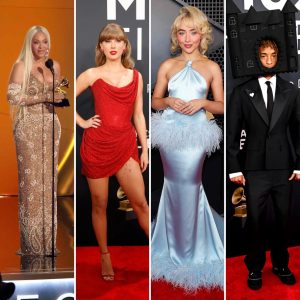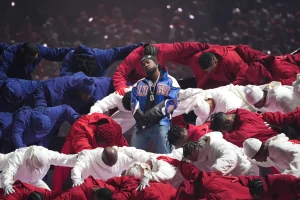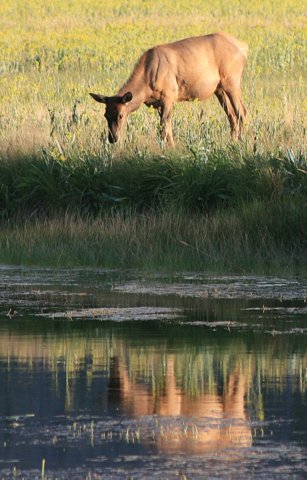None of these selfies: Sub reflects on photography
May 19, 2014
An Ansco camera. Twin lens. It was a glorified box camera. There wasn’t much to it, but it was his first camera.
Now a substitute teacher, Jerry Kasten had the opportunity to work as a secretary for a photography magazine in downtown Manhattan. His mom’s friend bought him a camera for his birthday and presented him the job after recognizing his talent.
“I was interested in photographs and this gave me a chance to take my own and experiment,” Kasten said. “It sort of opened up a little bit of creativity.”
Eventually, Kasten, once a high school dropout, joined the U.S. Army Reserve in 1953 and then Photography School, after he went back to school to get his high school diploma.
“Photojournalists have to go with what is there,” Kasten said. “Photojournalists don’t pose people like they do nowadays – there’s none of these selfies. Sometimes you have to act very quickly, get the picture right away and sometimes, you have to be very patient and wait for the right moment. You take pictures and say afterwards, maybe I should’ve done things differently. Or they see some other photographer’s work and say well, maybe he did a better job than you did. But you learn as you go along.”
After the Korean War, Kasten went overseas to South Korea, where he was assigned as the VIP photographer from 1955-1956. He was generally assigned to accompany important people and take pictures for the army’s use or as a departing gift to the guests. He also served as the general’s photographer, capturing important moments such as when the commanding general awarded a soldier.
“What I liked about my assignments was I didn’t sit there taking pictures of people for ID cards,” Kasten said. “Every assignment was different and it provided me the challenge to apply my own individual technique. There are certain pictures – like when a general pins a medal on a soldier – where you’re sort of limited. Yet you can be a little creative with the angle you take it at.”
Kasten said his pictures included criminal investigations with dead bodies, which he disliked because he always got nauseous around them. While in Korea in 1955, Kasten was assigned to photograph an exchange in North Korea in which the North Koreans were returning a U.S. pilot and his now dead passenger that they had shot down over neutral territory.
“I’m up close,” Kasten said. “The North Korean officer spoke perfect English and he was smiling all the time. I later found out he had attended Harvard University. Everything he did was for propaganda because there were all these newspaper people from the U.S., Japan and Korea.”
He remembered that the pilot’s head was bandaged, one eye was covered and the other eye was sort of glassy-eyed.
“You could see that the pilot wanted to walk over to freedom,” Kasten said. “He started to walk and this North Korean held him back against his chest and another North Korean officer brought forward a cloth and opened it up, showing the pilot’s wallet, keys and other belongings – he wanted to show the press that he was returning everything that belonged to this guy. They finally let him go, but when they were holding him back, I felt like I wanted to hit the North Korean officer. I got very upset and later thinking about it, I could’ve caused a big problem.”
There were over one million Korean civilians killed in the war, leaving many orphans – some who survived maimed or crippled. One day, Kasten had an assignment to visit three orphanages with the commanding general’s wife who wanted to visit to show her support. According to Kasten, American soldiers or United Nations soldiers there financially supported all of these orphanages. Every unit in the military had adopted one of the orphanages with about 30 just in the capital area.
“One kid had wooden legs and he was holding onto something trying to learn how to walk,” Kasten said. “Another kid had a hand that was metal. He was holding onto a pen learning how to write. They were treated well and many of them had smiles on their faces, but it was still very heartbreaking to see what they were going through.”
Despite Korea’s state of ruin, Kasten said he had the impression that there would be a good future for South Korea because of their hardworking nature.
“They would find a pen and they would clean it up and try to sell it on the streets,” Kasten said. “They were trying to make an income, trying to live.”
After the army and Korea, Kasten went to school at the University of Houston from 1957-1958 and the University of Texas, Austin from 1958-1960 – then taking classes to become certified as a teacher in 1961. Part of his inspiration to teach came from a vacation in college. Kasten and his friends drove to another friend’s cottage in New Jersey. His friends told him about one of the people they were visiting who had a boy, who later Kasten met.
“The boy says, ‘The world is round right?’” Kasten said. “I said ‘Yeah, I think so.’ He said, ‘It turns around right? Then why don’t people fall off?’”
Kasten hesitated before answering this question, as he knew he could not start talking gravitation with a little kid. Instead, he decided to take a visual approach, using the sandbox and bucket near him.
“I had read about this but had never tried it, so I wasn’t sure it was going to work,” Kasten said. “I took a bunch of sand and put it in the bucket about half full. I picked up the bucket and quickly swung it around. I said, ‘What happened? The sand didn’t fall out. That’s what happens. The earth turns around so quickly that people don’t fall off.’”
With this response, the child seemed satisfied and walked away, smiling, while Kasten began considering the idea of teaching.
The summer after formally graduating from UT in 1960, Kasten decided to work as a seasonal park ranger in Rocky Mountain National Park, Colorado before coming back to school to get credits for his teaching certification. When he had earlier applied for the government seasonal employee job, he got back two approvals – one from Rocky Mountain, Colorado as a park ranger and the other as a forest ranger in Coeur d’Alene, Idaho. Unable to decide between the two, Kasten used the more preferred uniform as a tiebreaker.
“I like to fish and the largest trout ever caught was from Coeur d’Alene, but Rocky Mountain Park in Colorado was very scenic and so on,” Kasten said. “I got pictures of the two different uniforms and I took them to the sorority where the girl I was dating at the time was and asked the girls there which uniform they liked better. Almost all of them liked the park ranger uniform better, so that’s why I accepted the job at the Rocky Mountains National Park.”
Kasten decided to only work during the summers since he was already set to be a teacher the coming year in Dallas. During the summers of 1961, 1962, 1963 and 1967, Kasten offered his services at Yellowstone National Park, Wyoming and spent his final summer as a park ranger at Mammoth Cave National Park, Kentucky in 1971. He preferred Yellowstone National Park out of the three.
“Yellowstone has such a variety of things to see and do there – you can climb, kayak, hike and see – or can’t see – all kinds of animals,” Kasten said. “You’re surrounded by mountains in Yellowstone while in Rocky Mountains you’re in the mountains and Mammoth Cave you’re under the ground. You can never run out of things to see and do in Yellowstone.”
As Park Ranger (General), Kasten said he was expected to do a little bit of everything and didn’t know his specific assignment until the given day. He found out he would take the position of a writer and a photographer, which was very similar to his role in the army.
“If you’re wearing a uniform, the people just know you’re a ranger and therefore, you know everything,” Kasten said. “Sometimes you get funny questions. Like, ‘Will I see a bear?’ And you have to answer it the best you can.”
While working at the lake area in Yellowstone, there were signs leading to the lake that would say “approaching lake area.” According to Kasten, a lady in the parking lot rolled down her window from her car and called out to him, ‘Oh ranger, oh ranger.’
“I walk over and she says to me, ‘Ranger, can you tell me where Lake Areea is?’” Kasten said. “’I saw signs.’ I said, ‘We have Lake Yellowstone. What signs?’ She said, ‘Signs saying Lake Areea.’”
Kasten realized she had read “Areea” instead of “area,” and told her this was it.
“You never know what people are going to ask you,” Kasten said.
After Kasten suggested to create a new column section for seasonal memories , “The Ranger” magazine decided to feature one of his experiences at Yellowstone giving tours in their upcoming summer edition.
Kasten went on to teach in Dallas for 29 years. Because he lived in the Richardson area, one block away from the Plano school district, his children went to Plano schools including Plano Senior. Soon after retiring from full-time teaching, he tried substitute teaching in places like Frisco, Carrolton and Richardson, eventually settling in Plano.
Photographer, teacher and park ranger doesn’t cut it. Kasten has also worked in civil defense, as a Dallas police reservist, veteran activist and airport ambassador – after deciding to go back to high school and getting his diploma.
When he was about 17 years old, Kasten said his oldest brother, a New York policeman, saved his life.
“One day, he saw me out on the street,” Kasten said. “I had a job and he was living away from home married. He asked me why I wasn’t in school and I said, ‘Well, I dropped out. He said, ‘You got to have a high school diploma, or else you can’t get good jobs,’ and he was right.”
Kasten’s brother took him back to his brother’s old school, where they allowed him in. Kasten graduated within a year. This especially taught him to have confidence in himself.
“It gave me hope for the future,” Kasten said. “I never thought I’d do this and I never thought I’d do that, and I’ve done many things,” Kasten said. “You have to be willing to go different directions – it makes for a more exciting life.”

